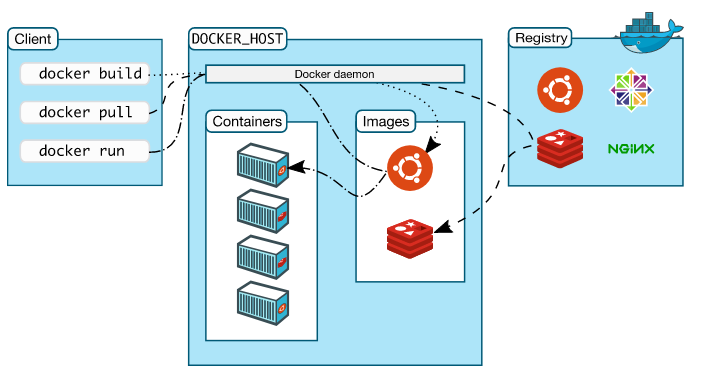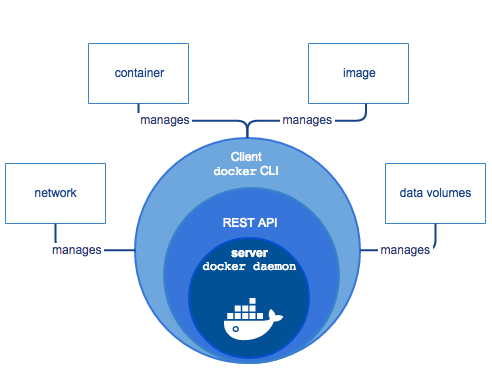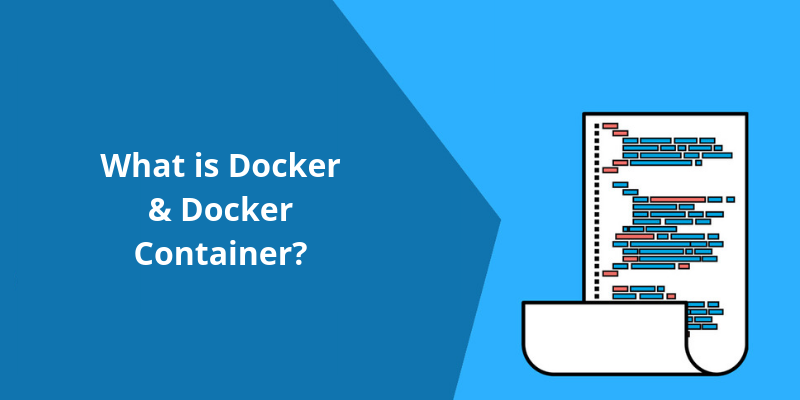If we ask what is Docker there could be many answers to, because Docker is a company and it has products with name Docker itself. Here in this article if we Docker it would be related to the Docker container tool or program. It’s often seen that the project that we have created on our local system and environment works fine, but when it deploys or run on other systems it shows some issues, because the other system may not contain some dependencies or tools that your system had, to resolve such problems we use containers program.
What are Containers?
Containers are special programs that can isolate processes in it. They can assign resources to the project and hold all the dependencies at once. With the help of containers, we can pack our complete project include all dependencies such as libraries APIs, etc in one package.
- Builder: A technology that is used for building a container.
- Engine: A technology that is used for running a container.
- Orchestration: A technology that is used for managing multiple containers.
The most amazing capability of the container is that it can be erased or respawn as per the demand of the user. Therefore, the erase of a container can be caused due to a crash. Containers are referred to as temporary and to respawn new cases as frequently as needed. It is supposed that monitoring and maintaining them is done by automated ways instead of a human in real-time. Linux containers are helped as a huge variation in high-availability computing. There are various toolsets available for benefiting in running services in containers. Docker is one of the options in many, which is defined through the Open Container Initiative (OCI). It is an enterprise standards organization intended for encouraging innovation while bypassing the threat of vendor lock-in. Due to OCI, you can have a variety when selecting a container tool such as Docker, OKD, Podman, rkt, OpenShift, and others. In case to choose for running your services in the container, then you apparently require software intended for hosting and managing those containers. It is widely called container orchestration, and Kubernetes gives container orchestration for various container runtimes.
Advantages of Containers:
- With containers, we can isolated processes.
- Two containers in the same system can run side by side without interfacing each other processes.
- We can manually configure the process of one container to communicate with other containers processes explicitly.
- Different containers in the same system will shear the same hardware, but the processing of each will be individual.
What is Docker?
Docker is a company that has a product called Docker container. Docker is a software development platform similar to a virtual machine that is basically used to create, deploy, and run applications in a containerized environment. As we know that containers help the developer to create an environment that holds the project itself along with its all dependencies so it could be deployed on any platform and work the same as it was working on the developer local system. Containers give assurance to the developer, that the project was created work the same as it was in the developer system and there is no need to make any other changes in that project to make it run on other systems. Up to some extent, we can compare a Docker with Virtual machine which makes the code platform-independent. The most important thing, Docker is an open-source software which means anyone is free to use docker to create their own project, but there are many premium other premium Docker features which are paid.
Where to use Docker
Docker is mostly used as one of the DevOps tools, in DevOps (Developers, Operations) culture we often require containers so developers can work on isolated projects and no conflict arises when they share the same system. With the help of Docker, developers can write their individual codes, without concern about the system collapsing two processes.
Some Main Features of Docker:
Docker is one of the popular virtualization technologies for software delivery and deployment. Here are some main features of Docker.
1. Easy to Use
Docker provides a virtualization interface, that makes Docker not to completely dependent on command lines. With its virtualization interface, docker is very easy to use if we compare it with other virtualization tools such as vagrant, Kubernetes etc.
2. Open Source technology
It is an open-source tool so anyone can use it for their own project and would not need any license or confirmation from Docker developers.
3. Scaling Applications
With docker, we can work with different containers that directly run on Docker host with Linux native programs. Before docker, most of the maintenance cost went to hardware to scaling up the application, with the Docker there is less workload on the hardware and makes different containers to run on shared memory saved the maintenance cost and increase the scalability of the applications.
4. Application Delivery
With Docker containers, the delivery of applications has become more convenient. As containers are portable and make the application platform-independent. Container contains projects as well as all its dependencies so it could be work any platform.
5. Flexibility
A docker can contain many containers at once and give control to the user how he wants to manipulate all the containers, the user can manipulate containers accordingly which provides more flexibility to use a docker container.
6. Microservices
Docker uses the microservices architecture in which the application is divided into many micro sub-processes. The main advantage of microservices architecture, even a process get failed it would not create any effect on other processes of containers.
Capabilities of Docker platform
Docker offers the capability for obtaining a package up and working in a loosely segregated environment known as a container. So isolation, as well as security, provides you with the ability to run multiple containers simultaneously on a given host. Containers are lightweight, as they don't need any extra load of the hypervisor, and still run immediately within the host machine's kernel. It means that anyone can run various containers on a given hardware combination as if you were using a virtual machine. You can also host machines that indeed run Docker containers in virtual machines. Docker presents tooling and a platform for managing the lifecycle of a container:
- You can develop the application as well as supporting components by containers.
- The container converts the unit for distributing and testing your application.
- When you are ready, and then deploy your application in the production environment as the orchestrated service.
- It works at the same time that your production environment is a local data centre, cloud provider, or a hybrid of both.
Architecture of Docker
Docker uses that client-server architecture in which Docker clients communicate with the Docker daemon. It performs a substantial lifting of building, distributing, and running the Docker containers. A Docker client and daemon can operate on the same system, but you can connect the Docker client to remote Docker daemon. The Docker client and daemon communicate through a REST API, over UNIX sockets.

The Docker client
It refers to a primary means that multiple Docker users communicate with Docker. When a user uses a command like a Docker run, then the client sends the command to Dockerd that carries them out. Basically, the Docker commands are used by Docker API and the Docker client can easily communicate with more than 1 daemon.
The Docker daemon
The Docker daemon (dockerd) monitors requests for Docker API and handles Docker objects like images, volumes, containers, and networks. A daemon can further communicate with different daemons for managing Docker services.
Docker registries
It is used for storing Docker images and Docker Hub is the public registry that can be used by anyone. Docker is configured for the images on a Docker Hub by default. Users can also run their private registry. In case you utilize Docker Datacenter (DDC) then it combines Docker Trusted Registry (DTR).
What is Docker Engine?
It refers to a client-server application which is consists of major components, and they are:
- A server is a kind of long-running program known as a daemon process.
- A REST API defines interfaces that are used by programs for talking to the daemon as well as instructing it regarding the task.
- A command-line interface (CLI) client

The CLI handles the Docker REST API for controlling or interacting with the Docker daemon by direct CLI commands. There are various other Docker applications utilizing the underlying API and CLI. A daemon builds as well as manages Docker objects like images, containers, volumes, and networks.
Security factors of Dockers
Docker simply causes security to an application that runs in a shared environment. However, containers by themselves cannot have an alternative to using proper security standards.
Conclusion
As we know that Docker is a tool that is used to create, run, and deploy applications more efficiently through the containers. Containers provide convenience to a developer for packaging up the application by combining all required parts like libraries or other dependencies and use it as a single package. So In this article, we have provided complete information about Docker. This article consists of complete details about this topic so that you can understand these topics without having issues.
People are also reading:
- How to run commands inside Docker containers?
- What is Docker Image?
- How to copy files to and from Docker containers?
- What is Docker Container?
- How to search Docker Images using CLI?
- Docker Architecture & Docker Container
- How to pull Docker Images?
- What is Docker Hub?
- How to run an Nginx Web Server in Docker?
- What is Docker Networking?
